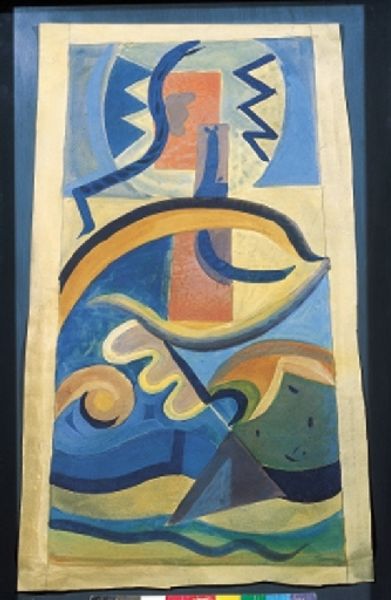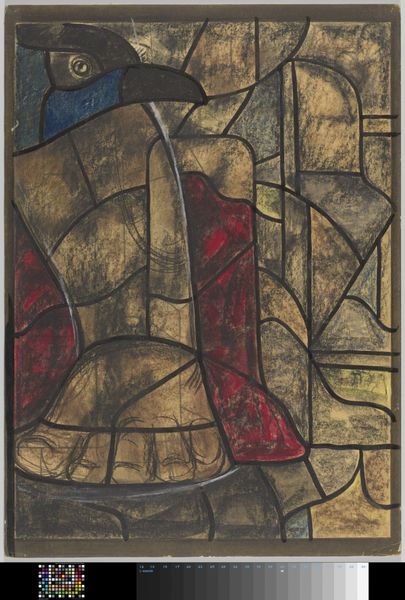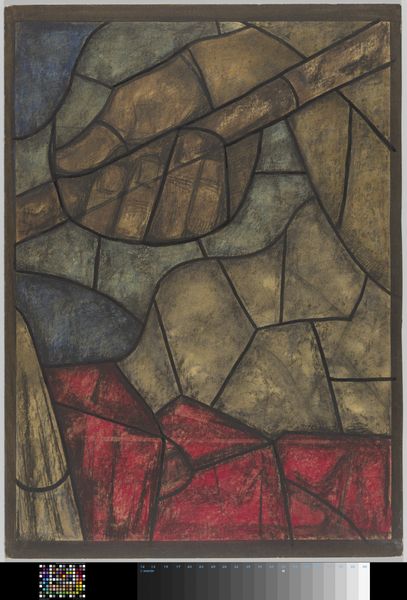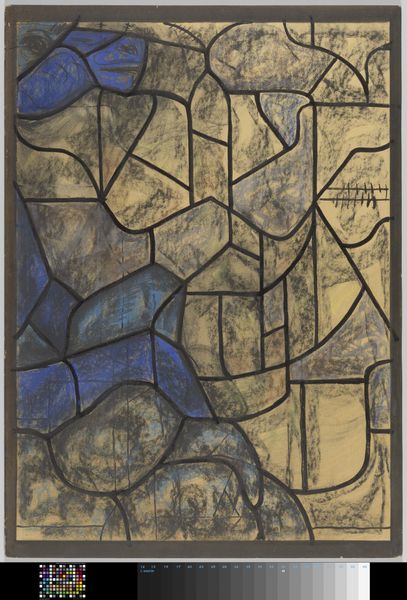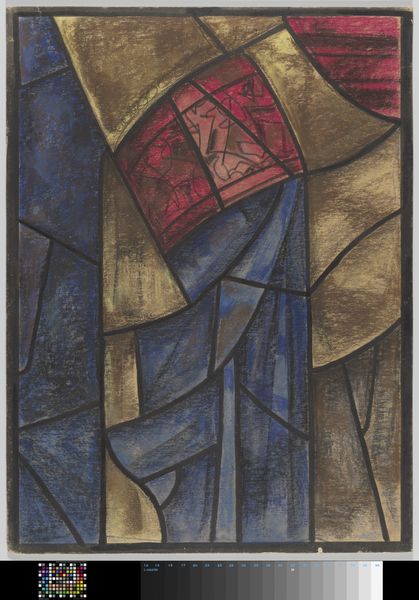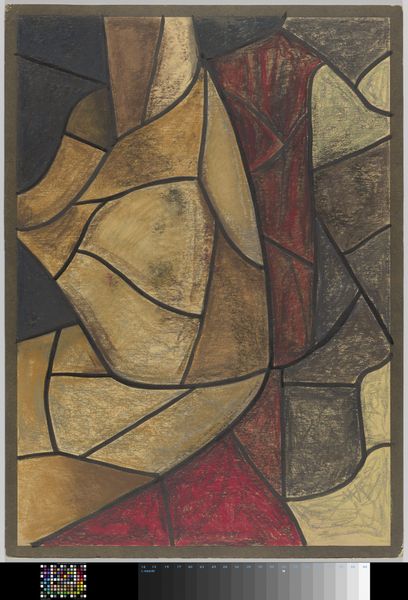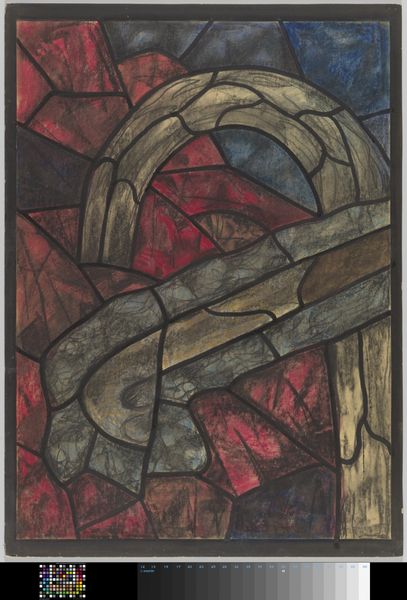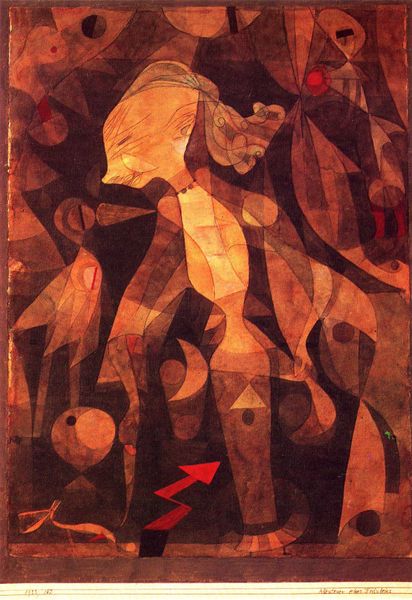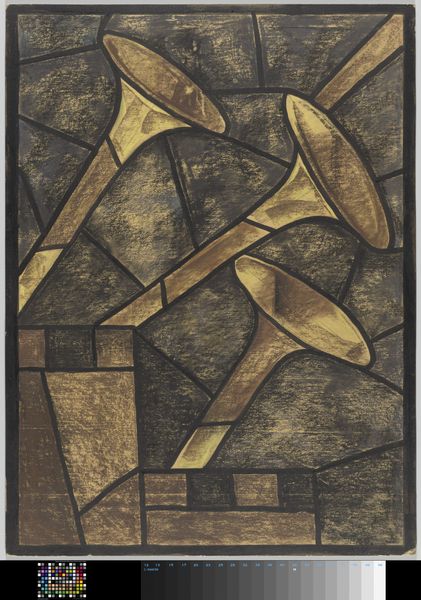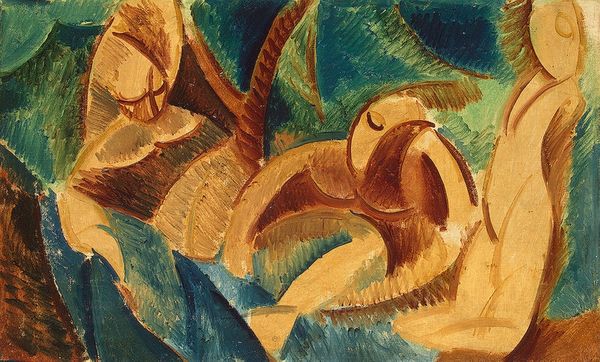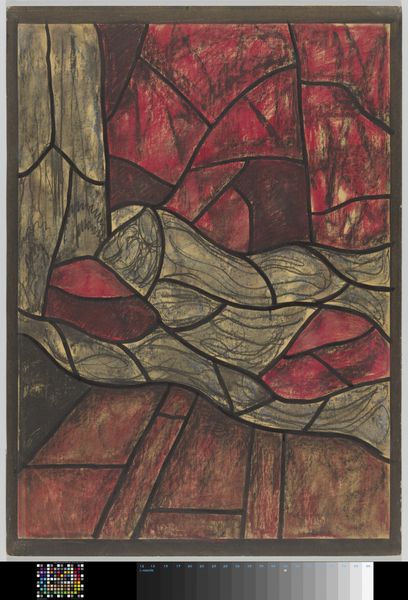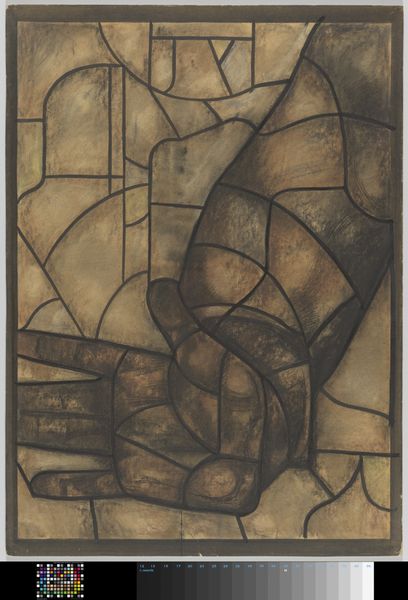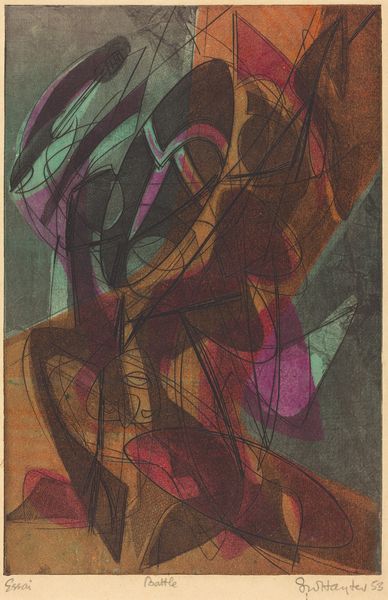
graphic-art, print
#
graphic-art
#
cubism
#
abstract painting
# print
#
figuration
#
geometric
#
expressionism
#
line
Copyright: Public domain
Curator: Dorrit Black's linocut print, "Music," created around 1928. It's an intriguing composition. Editor: Intriguing is one word for it! I'm immediately struck by the figures—or rather, the feeling of figures in dynamic poses. They evoke a primal energy. It reminds me a bit of ritual dance or even playful children, rendered through geometric abstraction. Curator: Black's interest in Cubism and Expressionism is quite apparent here. These movements were central to the interwar avant-garde, where artists questioned traditional representation. I find it quite telling how she incorporates those elements into her depiction of something as evocative as music. Editor: Absolutely, I see a strong connection with that era, but Black infuses it with unique visual symbolism. Observe how the figures overlap the patchwork of colours in the background. To me, it echoes a fractured, perhaps frenzied soundscape. It isn't a smooth, melodic composition; it feels jarring, deliberately dissonant. Curator: That dissonance is certainly key, given the cultural climate of the time. Black was exposed to modernist art theories while studying in Europe. Her return to Australia in the late 1920s coincides with broader debates on cultural identity and the search for a truly modern Australian art. I think, within that discourse, the art served almost as propaganda. Editor: And these figures, with their generalized forms—could they represent universal human experiences translated through the dynamic vocabulary of modern art? I also wonder about the lack of distinct cultural signifiers. They exist purely as vessels for movement, expressions. This raises a more timeless significance beyond 1920's Australia. Curator: You highlight something critical here. The ambiguity of the figures may serve to de-emphasize individual narratives. Black shifts the focus to the collective and perhaps even to something fundamental about the human condition itself through line and shape. Editor: This exploration, this bold departure from traditional artistic constraints, demonstrates how visual language may reflect, interpret, and shape society. The artwork remains thought-provoking. Curator: It makes one appreciate the role that printmaking, and graphic art at large, played in democratizing art in the early 20th century, helping modern ideas permeate a broader audience.
Comments
No comments
Be the first to comment and join the conversation on the ultimate creative platform.
